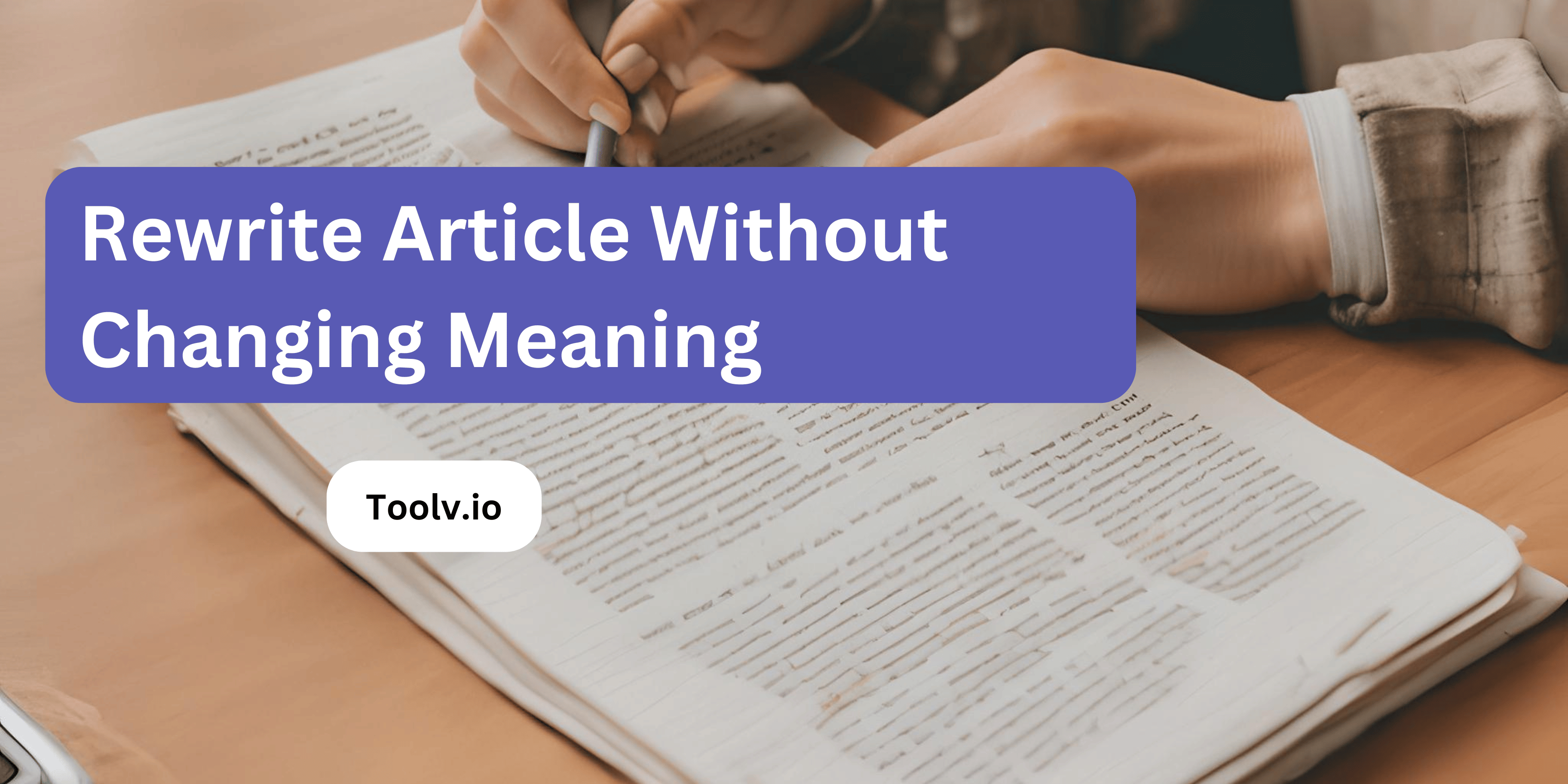What Does Summarize Mean?
Summarizing means condensing a larger piece of text or information into a shorter version, capturing only the main points or ideas. It’s like giving a quick snapshot of the most important parts without getting into all the details.
In this article, we will discuss the art of summarizing, exploring how to pick out key ideas and convey them effectively. We’ll look at techniques to keep summaries concise and clear, ensuring they provide a solid understanding without the extra fluff.
What Does Summarize Mean?
Summarize means to tell the main points of something shortly and clearly. Imagine you read a big story. When you summarize, you tell only the key parts of that story. You skip the small details and just focus on the main points.
Doing this helps people understand the main ideas quickly. It’s like giving someone the big picture without making them read everything.
When you summarize, you make things simpler and easier to grasp. It’s a handy skill, especially when sharing lots of information.
Why Is Summarizing Important?
Summarizing is like giving a mini-version of a big story. It helps you tell the main points without all the extra details. This is super handy in school, work, or even just chatting with friends.
It’s also a great skill for learning. When you can summarize well, it means you understand what you’re talking about. It’s not just about making things shorter.
So, summarizing is a key tool. It helps in clear communication, saves time, and makes sure the main ideas shine through. Whether you’re studying, working, or explaining something, being able to summarize is super useful.
What Are the Steps to Summarizing Effectively?
- Understand the full content: Read or review the entire text, video, lecture, etc. to comprehend the overall meaning and main ideas. Take notes or highlight key points. This allows you to determine what to focus on in your summary.
- Identify the main idea or thesis: Determine the one overriding main point or argument the source content aims to communicate. State this clearly near the start of your summary.
- Remove excess detail: Weed out supporting points, examples, and background context that, while useful, aren’t vital to understanding the big-picture key messages. Be ruthless in focusing only on critical info.
- Use clear, economic language: Summarize the remaining key details supporting the main idea in a compact form using your own simplified wording and sentence structure. Strike a balance between brevity and inclusion of substantive information.
- Keep interpretive commentary separate: Avoid injecting too many of your personal opinions or interpretations of the content into the summary itself. Present things objectively.
What Are the Different Types of Summaries?
1. General Summary
An informative summary is a type of summary that provides an objective, neutral overview focusing on the central ideas and most important details of a piece of writing, speech, report, video, or other material.
Key features of informative summaries:
- They objectively present the material’s key points, main topic, prominent supporting details, and structure without subjective bias.
- They do not offer any critique, evaluation, or interpretation of the content. The informative summary strives to help readers understand what it is about independent of opinion.
- Length can vary from brief overviews to more thorough outlines depending on needs, but content and tone remain strictly informational.
- Typical uses include abstracts, literature summaries, scientific summaries, executive overviews for documents, video recaps, lecture synopses, meeting minutes, and more.
In short, an effective informative summary acts like a neutral map or mirror of the most important parts of the original, allowing efficient understanding without coloring it by personal judgment or commentary when recall or exchange of broad yet substantive information is the goal.
2. Abstract Summary
An abstract summary is a very brief informative summary that highlights the purpose, scope, and contents of a larger work in a condensed form. Typically found at the beginning of research papers, articles, or reports, abstract summaries:
- Concisely outline the main objective or thesis of the full-length document.
- Identify the key topics, techniques, data sources, issues addressed, and type of evidence provided in the main analysis.
- Enumerate the most significant conclusions reached by the author(s).
- Are typically 100-250 words, rarely exceeding 300 words even for longer papers.
- Use compressed, economical language to convey only the main ideas in very limited space.
- Avoid specifics, examples, data, citations, illustrations etc. Too truncated to elaborate.
In essence, the purpose of an abstract summary is not to replicate or replace the original paper but rather efficiently communicate only its core focus, methods, findings, and conclusions to enable readers to quickly grasp its nature and whether closer study is warranted.
3. Key Point Summary
A key point summary refers to a type of summary that captures only the most important ideas and elements of a larger work.
key features of a key point summary include:
- Focuses exclusively on highlighting the 3-5 most significant points or arguments made in a source.
- Significantly compressed in length – usually in paragraph or bullet point format.
- Strips away all but the essential concepts, evidence, and conclusions.
- Used when needed to intensely prioritize core messages for quick digestion.
- Common in business settings, academia, journalism, and research.
- Differs from an abstract summary by isolating just the crux insights worthy of highlighting, not wider breadth.
- Aids rapid recall of essence and quick scanning for relevance by clearing informational noise.
Can reference specific statistics, facts, or statements if vital to the central thesis.
In effect, key point summaries distill content down to only the flagship takeaways, breakthroughs, or recommendations judged to have paramount importance, allowing focused application without absorbing entire reports or proposals.
4. Outline Summary
An outline summary is a summary type that provides a structured overview of a source’s main points and key supporting details in an abbreviated bulleted or numbered format.
The key characteristics of outline summaries include:
- Organizes the central idea and flow of content using headings, bullet points, and terse phrases in a hierarchical outline style.
- Follows the sequence and logical build-up of the full-length source material.
- Uses succinct statements rather than full sentences when listing main sub-topics and arguments.
- May include brief factual detail or data to illustrate key ideas.
- Avoids unnecessary elaboration—focuses on the content framework.
- Used heavily in academic studying to map textbook chapters, articles, and lectures.
- Also seen outlining long reports/documents for business or institutional decision-makers.
In short, outline summaries provide a streamlined digest of extended works in a convenient visualized format to simplify the review of rationales, conclusions, and salient points at a glance without wading through lengthier elaborations best left to the source.
5. Highlight Summary
A highlight summary refers to a summary that extracts and focuses exclusively on the key highlights, memorable moments, or most important takeaways from a speech, media clip, published work, or other extended communication.
Characteristics of quality highlight summaries:
- Include only the pivotal points, standout quotes, breakthrough announcements, critical outcomes, or revelations judged to matter most.
- Omit contextual fillers, statistics, supporting arguments, etc. – isolated highlights only.
- Typically very terse – often bulleted quotes or captions introduced minimally.
- Used heavily in media, entertainment, and politics to capture peaks of interest.
- Allows busy readers to absorb the essence of lengthy policy addresses, conference keynotes, interview reveals, and more.
- Differs from abstracts or outlines by not summarizing the entire workflow.
- Provides memorable snippets to intrigue and inform without full-duration commitment.
In essence, highlight summaries act like compiled movie trailers – capturing the most stunning, celebrated, or controversial moments from wider presentations for simplified public sharing and discussion.
What Are the Techniques for Summarizing?
The main techniques for effectively summarizing content include:
Paraphrasing: Use your vocabulary and phrasing to accurately restate key parts of the material in a condensed form rather than directly quoting. This demonstrates comprehension.
Generalizing: Identify precise supporting facts and examples that can be summarized more broadly without losing relevance to the central ideas.
Deleting: Discern and remove incidental info, redundancies, and tangents that aren’t critical so you can focus only on key material.
Referencing: Credit sources when excerpting content via footnotes, endnotes, and parenthetical citations to avoid plagiarism.
Organizing: Categorize and sequence key points in a coherent, logical order with smooth transitions so relationships are clear.
Headlining: Compose descriptive headers, subheadings, or preview captions that signal critical topic areas for readable structure.
Analyzing: If critiquing, use precise, authoritative evidence from the source itself to substantiate logical assertions.
These core summarization techniques make processing and condensing everything from news articles to research literature more efficient and impactful. Consistent application refines overall critical analysis abilities as well.
What Are the Common Mistakes to Avoid When Summarizing?
Here are some of the most common mistakes to avoid when summarizing:
- Failing to grasp the full context: Not thoroughly reading or comprehending the key ideas in the original material before attempting to summarize it.
- Including trivial details: Focus only on what matters most rather than minor supporting points or background clutter. Omit the fluff.
- Skipping vital content: Be careful not to unintentionally leave out essential data, conclusions, or implications in your haste to abbreviate the work.
- Over-quoting: Avoid excessive quoted language when paraphrasing in your own words is clearer and more concise.
- Plagiarizing: Take great care to properly reference and cite summarized passages per academic or copyright conventions to avoid illegal use.
- Injecting opinion: Unless critical analysis is assigned, remain objective regarding the source’s intentions, results, and merits when summarizing key parts.
- Using vague language: Summarize material clearly and precisely using specifics rooted in the original piece rather than opaque generalities.
By being vigilant against these common missteps, your summaries will excel at capturing the essence of source works accurately, ethically, and readably every time.
Conclusion
Summarize means to present the core ideas from a large text shortly and clearly. It’s about picking out the key points and leaving out the rest.
Toolv.io’s paraphrasing tool helps to rewrite the text in new words while keeping the original meaning. It’s useful for making content unique and easy to understand.





